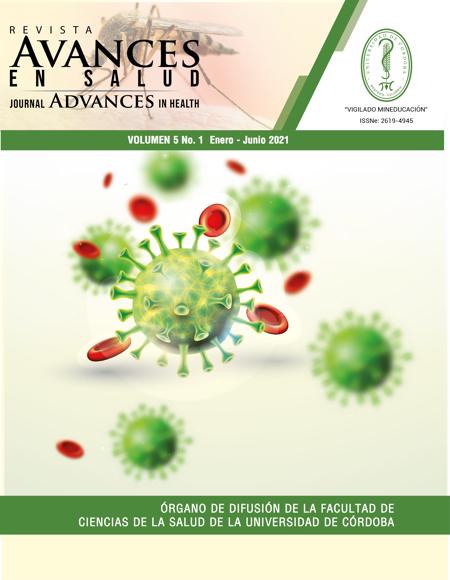Malaria epidemiology in colombian caribbean, 1950-2019
Epidemiología de malaria en la región Caribe colombiana, 1950-2019
Show authors biography
Objective: Establish malaria epidemiology behavior in Colombian Caribbean, 1950-2019. Methods: A study descriptive, retrospective and observational was conducted of secondary sources information of Ministry Health 1950-2019. Variables of place, person and time were defined. A malaria cases database was organized, indicators of absolute frequency, measures of central tendency and relative frequency were estimated. Results: The accumulated malaria cases registered were 325.427. The decades 1950-1959 (33.6%) and 1980-1989 (29.3%) contributed the highest burden of cases. The average per decade was 46.489 cases/decade (SD ± 38,551, M: 25,283), the maximum and minimum values were 109.416 and 19.525 cases respectively. The distribution of cases by species was 55.8% (181.663 cases) for Plasmodium vivax and 44.2% (143.764 cases) for P.falciparum. The annual parasite incidence, P.falciparum incidence and P.vivax incidence were of 2.2, 1.1 and 0.8 per 1.000 inhabitants respectively. The departments that contributed the highest case load were Bolívar, La Guajira and Magdalena. Conclusions: The secular behavior of transmission showed an endemo-epidemic pattern, of low and very low intensity of transmission, with a predominance of P.vivax infections and an irregular frequency in the appearance of outbreaks.
Article visits 701 | PDF visits
Downloads
1. Padilla-Rodríguez JC, Olivera MJ, Ahumada-Franco ML, Paredes-Medina AE. Malaria risk stratification in Colombia 2010 to 2019. PLoS ONE. 2021; 16(3): e0247811. https://doi.org/10.1371/journal.pone.0247811
2. Padilla-Rodriguez JC, Álvarez G, Montoya R, Chaparro P, Herrera S. Epidemiology and control of malaria in Colombia. Mem Inst Oswaldo Cruz. 2011. 106 (S1):114–122.https://doi.org/10.1590/S0074-02762011000900015
3. González A. Epidemia de malaria en La Guajira: una muestra lamentable de la situación de salud publica en el país. Biomédica. 2000; 20(2): 151-152.







